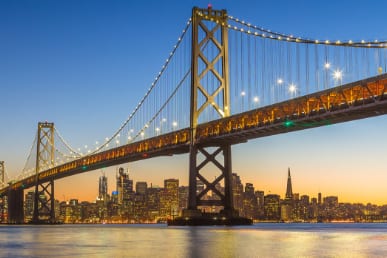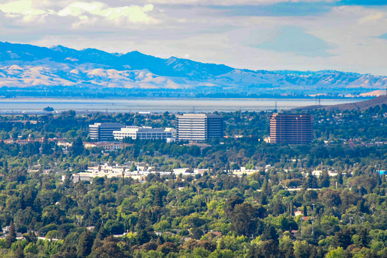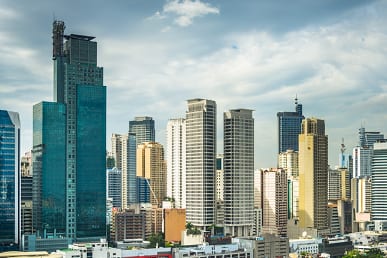By Attorney Eric R. Welsh
 The border wall, Donald Trump’s as-yet unrealized passion project, has consumed the political discourse for the past two years. Trump’s wall may or may not ever happen, but if it does, it is likely to have little effect on the flow of illegal border crossings (which have already been steadily declining over the last decade). However, the wall would likely provide an incredible market opportunity for entrepreneurial smugglers and traffickers. It would also stand as an indelible symbol, in the same way that the Statue of Liberty once did, although with a very different message. In place of “Give me your tired, your poor, your huddled masses yearning to breathe free,” it would tell the world: “Gated Community—Keep Out.”
The border wall, Donald Trump’s as-yet unrealized passion project, has consumed the political discourse for the past two years. Trump’s wall may or may not ever happen, but if it does, it is likely to have little effect on the flow of illegal border crossings (which have already been steadily declining over the last decade). However, the wall would likely provide an incredible market opportunity for entrepreneurial smugglers and traffickers. It would also stand as an indelible symbol, in the same way that the Statue of Liberty once did, although with a very different message. In place of “Give me your tired, your poor, your huddled masses yearning to breathe free,” it would tell the world: “Gated Community—Keep Out.”
The debate around Trump’s border wall have largely obscured the construction of another wall against legal immigration that has been taking shape since Trump took office. This “invisible wall” is being built not with brick and mortar, but with policy memoranda and internal directives that result in dramatic reductions in legal immigration and crisis-level delays in otherwise meritorious applications. A recent analysis by the American Immigration Lawyer’s Association (AILA) shows that while case receipts have leveled or declined, the backlog of cases awaiting decisions by U.S. Citizenship and Immigration Services (USCIS) has nearly doubled in the last two years, resulting in dramatically slower case processing times compared to only a few years ago. The delays force employers to scale down or seek less talented workers, and discourage students and others from seeking to study, work, and immigrate to the United States.
The “invisible wall” is the result of polices and practices that have been implemented by USCIS over the last two years with the apparent goal of slowing and reducing legal immigration to the U.S. Some of these policies include: (1) USCIS’ rescission of longstanding guidance that directed its adjudicators to give deference to prior applications for extension of status of employment-based cases involving the same position with the same employer, forcing USCIS to reexamine matters that were previously assessed; (2) overhaul of refugee adjudications, bringing many applications to a virtual standstill; (3) implementing a new in-person interview requirement for all employment-based applications; and, (4) dramatically increasing the number of cases that will be referred to immigration court for removal (deportation), including new directives to issue notices to appear in almost all denied applications, and new measures subjecting students and visitors with even minor status violations to deportation.
These and other policies result in extreme delays and denials in cases that in the recent past would have swiftly been approved. AILA recommends strengthened Congressional oversight and heightened USCIS transparency, and this is certainly important, considering that USCIS is an executive agency controlled by a man who campaigned on a promise to build walls and reduce immigration. Our immigration laws grant considerable discretion to the agencies adjudicating benefits and relief, and many relief applications are based on equitable standards like “hardship” and “humanitarian interest” that are subject to interpretive caprice. In the last two years, for example, USCIS has narrowly interpreted the meaning of words like “specialty occupation” to make it dramatically more difficult for foreign workers to qualify for temporary visas.
Facing such daunting obstacles, a vulnerable and unempowered foreigner may find herself on the outside of this “invisible wall,” losing hope of ever finding a door. Fortunately, the federal courts still provide certain avenues to challenge the immigration service. A person facing agonizing delays far exceeding “standard processing timelines” may consider filing for mandamus relief in district court (i.e., an order from a judge compelling the agency to do its job). A person who receives an adverse decision based on unfair or unwarranted conclusions may have a case for declaratory relief (i.e., a finding by a judge that the agency misapplied the law or failed to correctly analyze the facts or provide basic constitutional safeguards). Even before going to federal court, an applicant may make multiple inquires to seek action on their case (although these options are becoming more and more limited).
The “invisible wall” is, in many ways, more frustrating and impossible to scale than the proposed border wall. It is designed to extinguish hope and reduce immigration by frustrating and confounding lawful applicants. For that reason, the best weapons against it are persistence, fortitude, and zealous advocacy by an experienced and knowledgeable immigration attorney.




